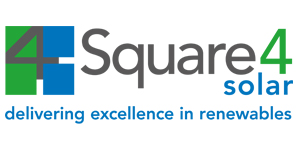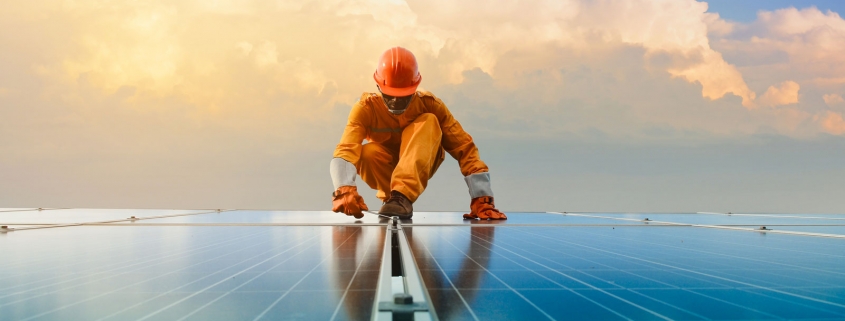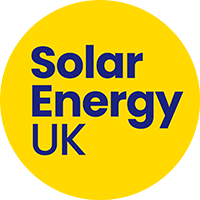Photovoltaic (Solar PV) Systems: Designing for Fire Safety and Long-term Performance
Solar power continues to be one of the fastest growing markets within the global energy generation industry, the requirement of which has readily become a mandatory condition of new commercial buildings for several reasons:
- Energy generated by solar power supports businesses with meetings carbon neutral targets.
- Solar panels can help new commercial buildings achieve a better energy certification rating.
- Harnessing solar power enables businesses to take control of energy (kWh) costs.
Energy remains one of the biggest expenses companies incur, especially for those businesses with high energy demands such as manufacturing plants. The proven financial benefits, combined with the environmental targets businesses must meet, are making solar power increasingly popular. In this article, we’ll help you better understand how solar PV works and explore why fire safety needs to be designed into the system at the start of a new development.
Understanding solar PV systems
The installation of a Photovoltaic Solar Power System (more commonly known as solar PV) can significantly offset the daily energy (kWh) demand from the grid required by a particular site. In turn, this substantially reduces daily/annual energy costs to the business.
A solar PV system consists of PV modules (solar panels) which can be directly secured to a roof or ballasted via specially designed mounting equipment and weights. The modules (solar panels) are connected to each other via DC connectors and cables and run to the solar inverter. It’s the solar inverter that converts the DC power into AC power, which can then be used to power electrical equipment in the building.
PV modules / inverters exemplify a low-risk investment over the course of the product lifespan, delivering a low-risk way of meeting energy certification targets.
Businesses can typically expect the following performance warranties:
- Module (solar panel) – 25 to 30 years
- Inverter – 10 – 20 years
In terms of the financial benefits, well-designed solar PV will pay for itself in just five to six years, which means businesses will typically benefit from 14-21 years of free electricity during the system’s lifespan.
Identify and minimise the risk
While the risk is low, as with any electrical installation, solar panels do present a fire risk. Data shows that fire crews are tackling an average of nearly 10 solar panel fires every month, while Zurich UK has identified a 12% increase in fires sparked by solar panels in the last year.
The impact of fire on a business can be catastrophic. As well as damage to the property itself, in severe cases, operations can be brought to a halt, impacting revenues and posing the risk of having to make job cuts. It causes future insurance premiums to be much higher and in some tragic circumstances, can lead to loss of life.
Essential to minimising the risk of solar PV fire incidents is well-considered design and high-quality installation, as issues associated with installation have been identified as the largest single cause of PV fires, followed by product failure. If systems are not designed and installed to the relevant standards, or they are not regularly and properly maintained, businesses face an increased chance of this often-devastating situation occurring.
Mitigation in design
The solar industry has been offered guidance to ensure it’s taking the right steps to help businesses reduce their chances of experiencing a solar PV fire. The most prominent example of this guidance has been published in ‘RC62’. This ‘Recommendations for fire safety with PV panel installations’ report draws on developments in risk control measures adopted by the UK solar industry in recent years, to explain how to mitigate fire risk through high quality design, installation, operation and maintenance.
Additionally, at the end of 2023 Zurich released its ‘Pre-design, design, installation, and operation risk Resilience Solutions – Risk Engineering’ whitepaper. Providing clear and digestible instructions to follow during the pre-design, design, installation and operation processes, this guidance aims to minimise the chances of fire occurring. A particular focus in Zurich’s whitepaper is the role of fire safety switches.
At Square4Solar, we actively promote fire safety switches as a vital element in any solar PV project, and only select inverters with built in ARC fault detection.
The future is optimised
Current fire safety switch configurations either link automatic DC String Disconnection Switches with the building Fire Safety Panel or provide a shutdown switch next to the Fire Safety Panel for DC String Disconnection Switches. In both configurations, the systems are also shutdown by a loss of mains power.
This shutdown is triggered by any of the following:
- The Fire Safety Panel via the triggering of a Fire Alarm
- Pressing the Emergency Shutdown Button installed next to the Fire Safety Panel
- Loss of Mains Power
The Automatic DC String Disconnection Switches will isolate the DC Strings (Power Generation) to the roof. In doing so, fire fighters can tackle any fires localised around the Inverters without fear of injury.
While this provides safety for when the fire is localised around the Inverter installation location, DC Generation on the roof remains live (just isolated). If the fire is on the roof, the automatic triggering of a DC Switch to isolate the generation to the roof will do little to stop the cascading fire affect upon the roof itself.
Moreover, the risk to the firefighters will remain as the panels continue to generate energy.
Insurance-led mandates
Following several high-profile fires which cost their clients enormous sums in both damages and downtime, insurance companies are starting to mandate the mandatory inclusion of optimisation technology within PV Systems.
The objective of this mandate is to ensure cascading fires can be detected before they happen via ‘electrical arc curve characteristic analysis in real time’.
In simple terms, this means monitoring each connection between the panels for any sign of sudden DC arcing – which would be represented in a build up of heat or increasing curve within its electrical characteristics.
Upon detection of a potential runaway arc, the optimiser system will cease sending a control signal down to each optimiser. Shutting all modules down to touch safe levels by reducing the direct current output to around 1VDC, ensuring total string output voltage can’t exceed 30V.
This enables the systems to rapidly shutdown and prevent any sort of cascading fire affect to take place. These events are also then instantly communicated via an online portal/ SMS messaging to predesignated users such as maintenance engineers and project managers.
Currently, Zurich recommends that the design documents for any solar PV system should always specify for a manual shutdown solution, with the switch made easily accessible to the responding fire service.
Additionally, as part of the design and installation process, you should conduct a planning visit with your local fire safety specialist/ local fire service so they can become familiar with the solar PV system, including the location of fire safety switches.
Zurich also suggests that on an annual basis, you should invite the fire service to visit your premises, review the pre-fire plan, practice the operation of switches, and update their plan as needed to reflect any changes to the building or solar PV equipment.
Make fire your first thought
Given the growing shift from “Recommendation” to “Insurance Requirement” for new commercial projects, fire safety should be a priority design consideration when it comes to the design and installation of a solar PV system in any project. This is especially true when you consider that the systems are designed to last for approximately 20 years.
In-time, due to the inherent risk and loss potential from ill-maintained PV systems over the course of their installation live span, it is anticipated that insurance companies will eventually make optimisation a mandatory requirement.
At Square4Solar, our in-house design support team helps ensure your solar PV installation meets defined specifications whilst meeting any requirements deemed necessary by the project fire safety specialist and local fire service.
To learn more about designing fire safety into your commercial solar PV system, schedule a fire safety CPD or contact a member of the Square4Solar technical team.




